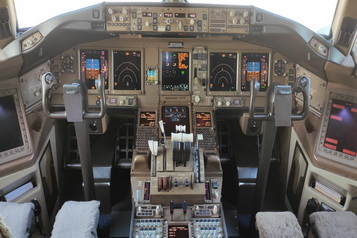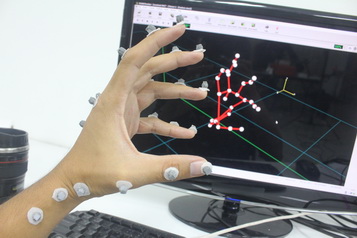Usability
 Visibility and Conspicuity
Visibility and Conspicuity
Visibility plays a vital role in a user’s ability to see warnings and signage at a safe distance, detect and differentiate color, avoid obstacles, and understand a systems operational status. The variables that influence what an operator can see include: light intensity, reflectivity, and contract ratio of target to background. Fusion human factors and ergonomics applies the principles of visually accessible design to determine the role visibility plays in accidents.
Standards & References
- ISO 9241-3 Ergonomics Requirements for office work with visual display terminals
- OSHA 1910.28 - Duty to have fall protection and falling object protection
- OSHA 1910.303 - General requirements
Reachability
 The ability to reach and operate critical controls or emergency devices, in a timely fashion, is crucial to the safe use of many commercial and consumer products. Inadvertent or slow operation can cause undesired machine or system outputs that put the user or others at risk of injury or death. Fusion’s human factors and ergonomics can determine if a control is reachable for various users’ groups using internationally recognized body size data for children and adults. In addition, risk factors for inadvertent activation of surrounding controls can be evaluated.
The ability to reach and operate critical controls or emergency devices, in a timely fashion, is crucial to the safe use of many commercial and consumer products. Inadvertent or slow operation can cause undesired machine or system outputs that put the user or others at risk of injury or death. Fusion’s human factors and ergonomics can determine if a control is reachable for various users’ groups using internationally recognized body size data for children and adults. In addition, risk factors for inadvertent activation of surrounding controls can be evaluated.
Standards & References
- SAE J287 - Driver Hand Control Reach
- ISO 6682 - Earth-Moving Machinery - Zones of Comfort and Reach for Controls
Digital Human Modeling

Digital human modeling entails inserting a digital human of specified body dimensions into a virtual environment to assess clearance, visibility, reachability, comfort, balance, and other performance factors. This technique is utilized throughout the stages of product development to incorporate ergonomic principles early in the product development process. Digital human modeling is also vital for understanding operator actions and injury potential in manual material handling tasks and a wide variety of accident scenarios. Fusion’s human factors scientists and engineers utilize digital human modeling to assist clients in all stages of product development, assessing injury potential, and accident reconstruction.
Standards & References
- Chaffin, Don & Nelson, Cynthia & Ianni, John & Punte, Patrick & Oudenhuijzen, Aernout & Hin, A & Bowman, Darrell & Thompson, Deborah & Peacock, Brian & Reed, Heather & Fox, Robert & Jimmerson, D. (2001). Digital Human Modeling for Vehicle and Workplace Design. SAE Int..
Time Motion Studies
Time motion studies examine, and quantify, the time workers spend performing a specific task or set of tasks. This plays a critical role in optimizing workflow, reducing worker exposure, managing fatigue, lowering risk for injury, and developing training or safety recommendations. Fusion’s human factors and engineering team discreetly gather data, using video and other sensors technology, to ensure natural operator behavior is captured. Comprehensive reports utilizing various statistical and visualization techniques are provided.

Standards & References
- Konz,Stephan., (2008) Johnson, Stephen., Work Design, Holcomb Hathaway


